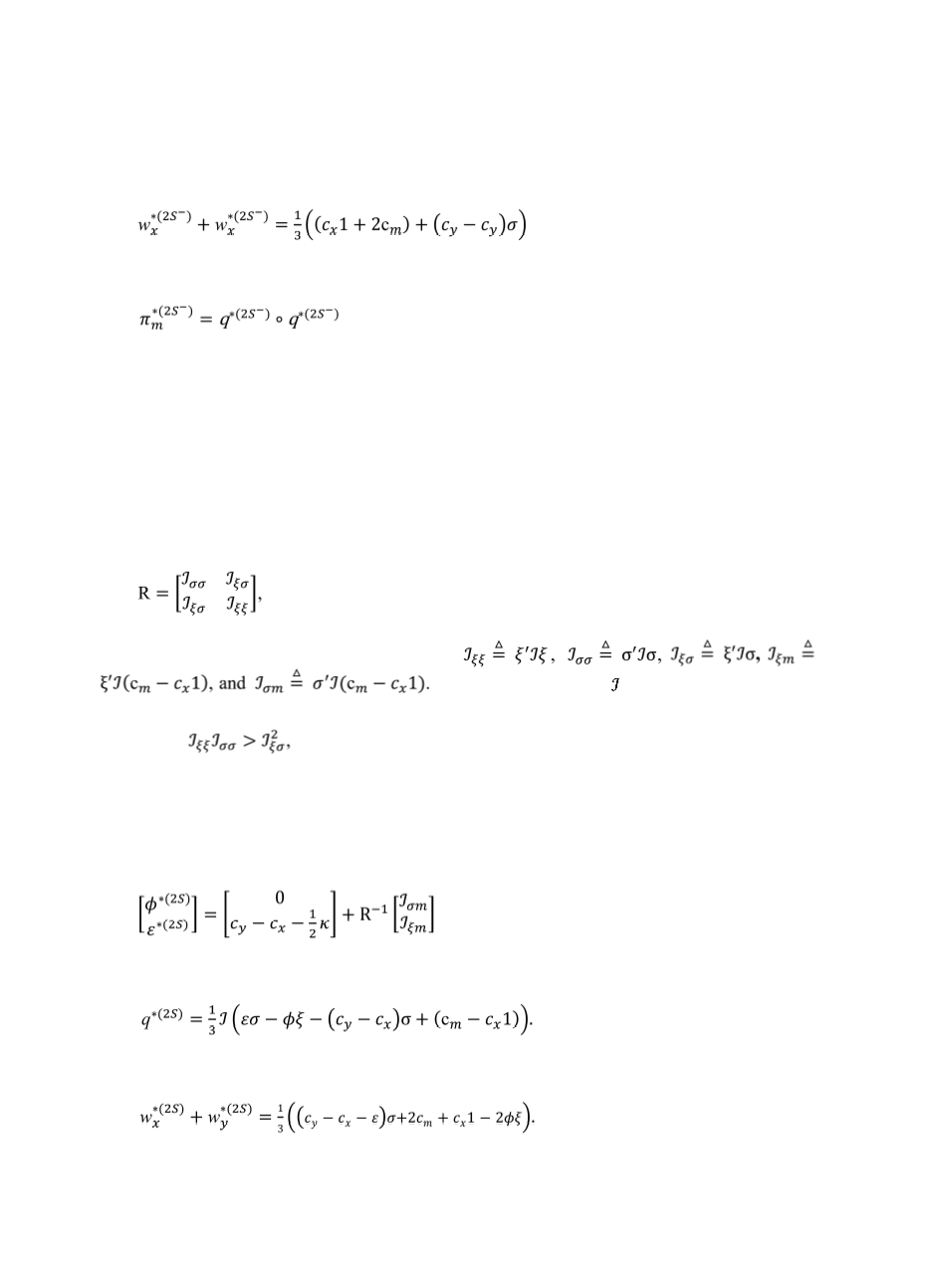

臺大管理論叢
第
27
卷第
2
期
171
The optimal wholesale prices are
(5)
The optimal profit for each manufacturer is
(6)
From Lemma 2, in addition to above-mentioned manufacturing cost factors, it follows
that the material cost differential (
c
y
–
c
x
) will further decrease the equilibrium manufacturing
quantity for the case of two suppliers without subsidy. It shows the use of EDRMs will
reduce the profit of manufacturer. If no proper intervention is introduced, it is definite that no
manufacturer will voluntarily use such materials. Now we consider the policy framework
(2S) in which a virgin material supplier
x
and an EDRM supplier
y
coexist, and the subsidy
goes to the EDRM supplier. Define an ingredient variability matrix as
(7)
where the ingredient cross variabilities are
Because the matrix is positive definite, all
cross variabilities are positive. The ingredient variability matrix is assumed to be diagonally
dominant.
that is, the variability within the same variables is greater than
variability between
σ
and
ξ
.
Proposition 1. ((2S)
Nash equilibrium
). Given EDRM percentage
σ
and the product
designs
ξ
, we have the following Nash equilibriums and they are unique.
(i) The optimal governmental decisions
(8)
(ii) The optimal sales quantities for manufacturers
(9)
(iii) The optimal wholesale prices for suppliers are
(10)


















